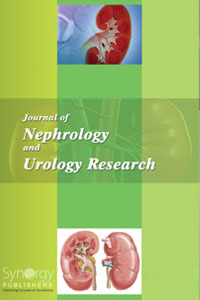
Difficult Urethral Catheterization in Cardiovascular Surgery Patients: Do you have a Road Map? Pages 32-36
Burak Özkan1, Enis Rauf Coşkuner1, Murat Şamlı2, Yusuf Kenan Yalçınbaş3, Veli Yalçın1 and Ahmet Sahin1
1Department of Urology, Acibadem University, Faculty of Medicine, Acibadem Bakirkoy Hospital, Istanbul, Turkey; 2Department of Urology, Acibadem University, Faculty of Medicine, Acibadem Bursa Hospital, Bursa, Turkey; 3Department of Cardiovascular Surgery, Acibadem University, Faculty of Medicine, Acibadem Bakirkoy Hospital, Istanbul, Turkey
DOI: http://dx.doi.org/10.12970/2310-984X.2014.02.02.3
Download PDFAbstract: Purpose: To report our approach and findings of intraoperative difficult urethral catheterization in cardiovascular surgery patients.
Materials and Methods: A total of 60 male patients who underwent intraoperative urologic consultation during anesthesia preparation for the insertion of Foley catheter where urology team failed to insert the latex Foley catheter by the normal procedure, were enrolled in the study. The kind of problems encountered and the methods employed were considered in this paper.
Results: In 4 (6.6%) out of 60 patients 14 F and 12 F silicone Foley catheters and in 6 patients (10%) 16 F Tiemann Foley catheters were inserted. Fifty patients (83%), in whom various types and sizes of Foley catheter could not be inserted, underwent rigid or flexible cystoscopy under endo-camera guidance. Eight of these patients (16%) underwent flexible cystoscopy, and 42 patients (84%) underwent rigid cystoscopy. The distribution of different pathologies seen in 50 patients, who underwent cystoscopy, was as follows: urethral calculi (2 patients), false passage (12 patients), bladder neck contracture or high bladder neck (16 patients), prostatic hypertrophy (8 patients), urethral stricture (12 patients). No micturition problem was observed during the follow-up.
Conclusion: We should strive to resolve the problem of urethral catheterization with the least possible trauma especially in patients with increased risk of bleeding who are scheduled for cardiovascular surgery. We think that performing this endoscopic procedure by cystoscopy helps to define the existing pathology and to relieve the problem successfully.
Keywords: Cystoscopy, cardiovascular surgery patients, difficult urethral catheterization, endoscopy, urethral catheterization. Read more
